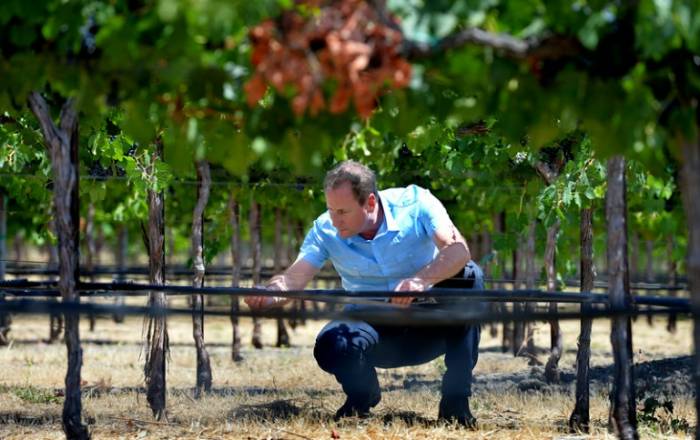
In France, the debate over irrigation in vineyards has intensified as climate change brings more frequent and severe droughts. Currently, just over 20 percent of French vineyards are irrigated. The practice is allowed for young vines, known as plantiers, and for established vines only between September 15 and May 1. This regulation effectively prohibits irrigation during the hottest months, when water demand is at its highest.
Producing one liter of grape must requires about 250 to 350 liters of water, with nearly all of it lost to evaporation. Some grape varieties and rootstocks are better adapted to dry conditions, but even these have limits. When water is scarce, vines naturally reduce their leaf and fruit production to survive. In drier regions, growers often prune more heavily to focus resources on fewer grapes, aiming for better quality. However, there is a threshold below which vineyards are no longer profitable. For example, in the Pyrénées-Orientales region, yields below 30 hectoliters per hectare make it difficult for growers to earn a living.
Irrigation is widely used in countries like Spain, California, and South America. In France, however, it remains controversial. Experts argue that irrigation is essential for preserving vineyards during extreme heat and drought. Without it, vines can die from prolonged water stress. There are currently no viable alternatives to irrigation under these conditions.
The genetic makeup of grape varieties also limits how much sugar they can accumulate in the fruit. Once this limit is reached—typically around 10 percent alcohol by volume—further concentration comes from evaporation rather than increased sugar content. Researchers hope that new grape varieties better suited to dry climates may be developed in the future.
For appellation d’origine contrôlée (AOC) wines, maintaining yields between 40 and 60 hectoliters per hectare is crucial for both sustainability and profitability. Irrigation does not increase yields beyond natural limits but helps ensure a minimum quantity of healthy grapes. Without enough water, vines stop producing organic acids, pH levels rise, aromas degrade, and tannin and phenol production drops—all factors that reduce wine quality and yield.
There are misconceptions about vineyard irrigation in France. Some believe it means flooding fields year-round, but this is not the case. Water use is strictly regulated and limited by local authorities. For instance, a project launched in 2023 in the southern Côtes-du-Rhône near Chusclan allows only 800 to 1,000 cubic meters of water per hectare per year, with permits issued by the Gard prefecture.
Efforts are underway to help growers use water more efficiently. Researchers advocate for irrigation bulletins that advise when and how much to irrigate based on real-time needs. The most effective irrigation targets fine surface roots—radicelles—which absorb water best and renew each year. Contrary to popular belief, vine roots do not always grow deep in search of water; most active roots are found within the top meter of soil.
The regulatory framework may evolve as research continues. A commission at the Institut National de l’Origine et de la Qualité (INAO) is currently studying possible changes to allow controlled conservation irrigation based on vineyard size and need. Proponents argue that such measures would not alter the character of French terroir or its wines; instead, they say climate has always been the main driver of wine style evolution.
As droughts become more common across France’s wine regions, the question of how best to manage water resources will remain central to the future of French viticulture. The balance between tradition and adaptation will likely shape both regulations and practices in the years ahead.
